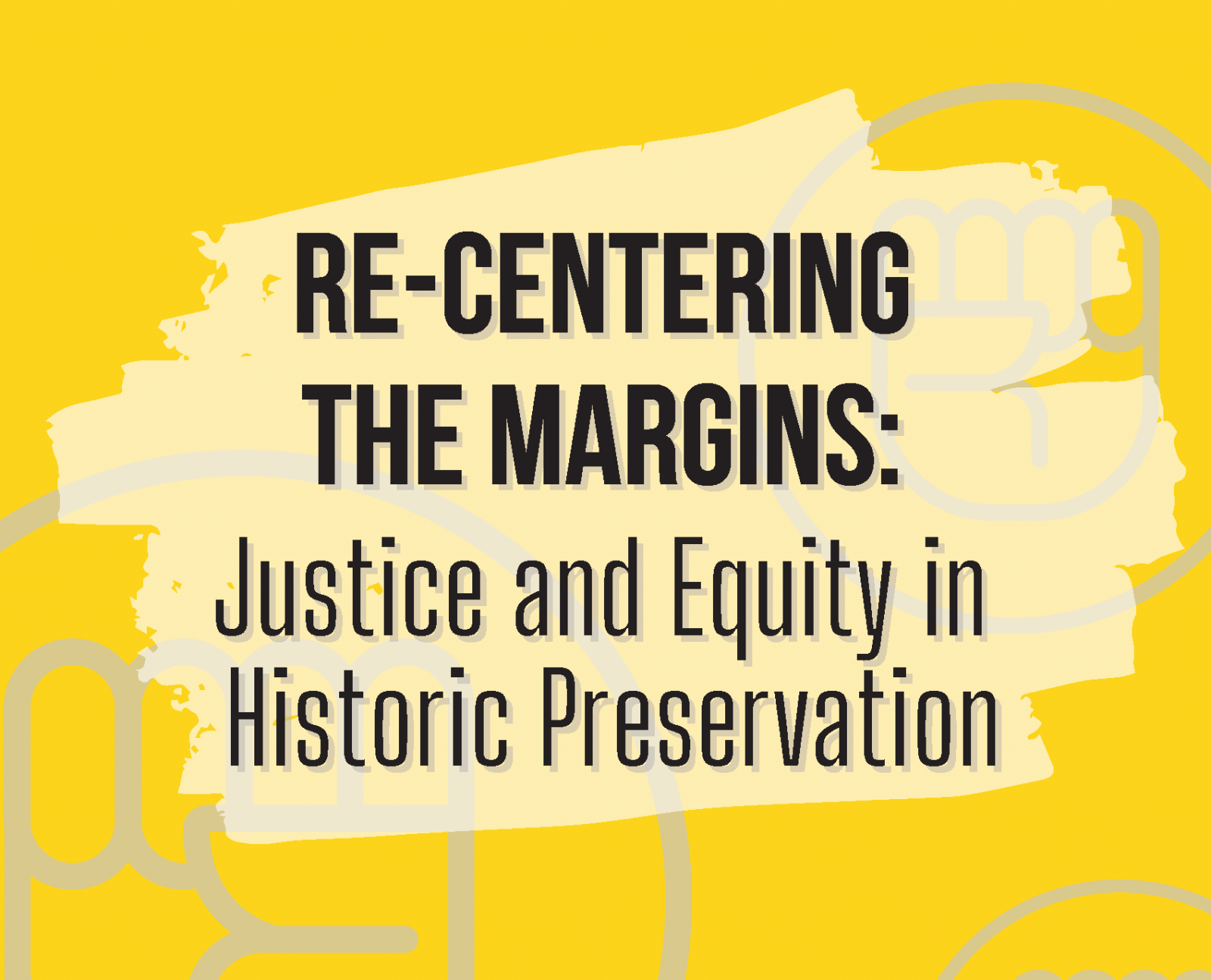For decades, some of the most groundbreaking work happening in historic preservation was not written about. It wasn’t taught in the classroom or regularly celebrated at conferences. And it did not catch the eye of practitioners or government agencies. Until recently, it has lived on the edges of the field, often operating under the guise of museum studies or urban planning. Yet, this important work, and the individuals behind it, are poised to not just disrupt the field of historic preservation, but crack it wide open.
Next week, over 30 practitioners, academics, community advocates and policymakers—arguably some of the brightest minds in historic preservation—will gather for the first time to share their work in addressing equity and justice in the practice. “Re-Centering the Margins: Justice and Equity in Historic Preservation” will take place virtually on Wednesday, January 27 and Thursday, January 28, highlighting the research, work and perspectives of BiPOC, women and queer practitioners.
Developed by UMD Presidential Post-Doctoral Fellow Dr. Michelle Magalong, the two-day symposium grew out of a desire to illuminate impactful, yet overlooked work by underrepresented practitioners in historic preservation, a deep-seated issue in the field that is overdue in garnering attention. Long considered a predominately White field, the institutional and pedagogical constructs of historic preservation have largely sidelined underrepresented minority groups and the people who practice within their communities.
“We’ve always existed in the margins,” she says “We’ve been here, doing really good work, but because of the circumstances and structures that exists, we haven’t regularly been recognized for our scholarship, activism or expertise.”
Now, with a new administration and more diverse cabinet members filling the offices of Washington, including Congresswoman Deb Haaland, a Native American woman nominated to lead the Department of the Interior, the opportunities to elevate the work of BiPOC and other underrepresented practitioners are even greater. This symposium, which was originally slated to be in-person last April, is ripe to do precisely that.
“It’s an opportunity to leverage scholars, practitioners and community leaders to guide that future framework—and their names are all on the symposium line-up,” says Magalong.
That line-up, which includes scholars (in the fields of history, urban planning, ethnic studies, religious studies), conservationists, advocates and preeminent museum administrators, will discuss challenges and successes in furthering justice and equity in historic preservation, reconceptualize the standards of practice and share what drives their work. More than half of the sessions will offer case studies in historic preservation. Congressman Raul Grijalva, Chair of the House Committee on Natural Resources, will provide the keynote Wednesday.
“This symposium fills a critical gap writ large in both education and practice, and we are honored to showcase this important work,” says Interim Dean Donald Linebaugh. “Those with a vested interest in the future of historic preservation should take note of these exceptional practitioners and scholars.”
The symposium will later be repackaged and made available online for educators, practitioners and agencies to use for advancing education, policy and practice. Magalong hopes it inspires new conversations on equity and elevates work in historic preservation research and activism centered on advancing justice and equity. She also hopes this symposium is just the beginning, spurring more events, published work and increased interest in the field.
“It’s time to break open this really narrow mindset that no one is doing this work,” says Magalong. “We’re doing the work and we are the experts. I hope this builds a movement that’s truly comprehensive and inclusive.”

